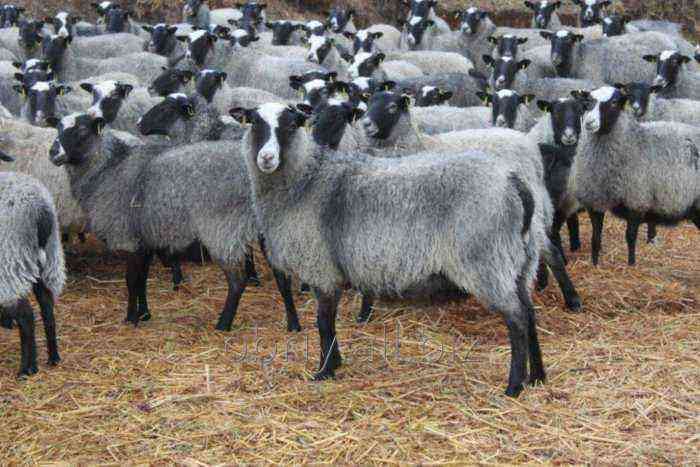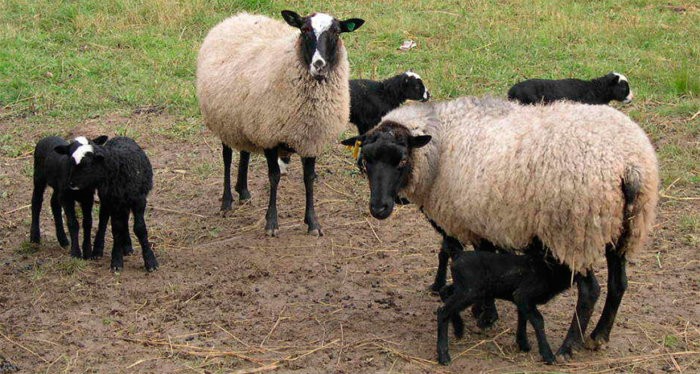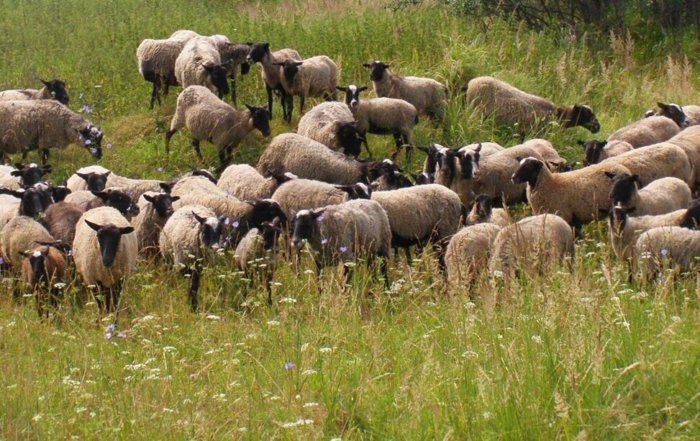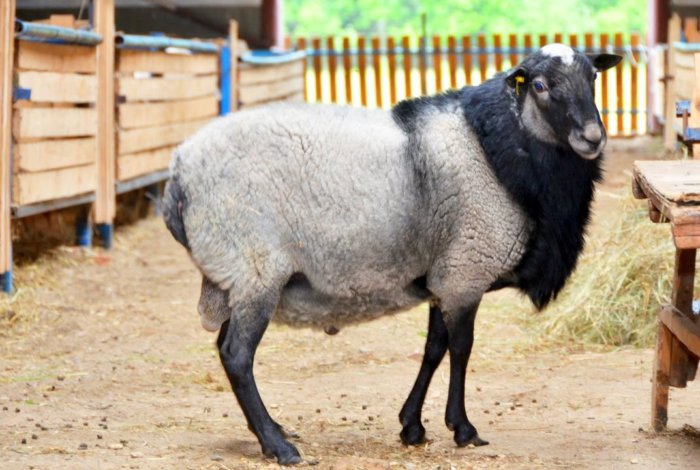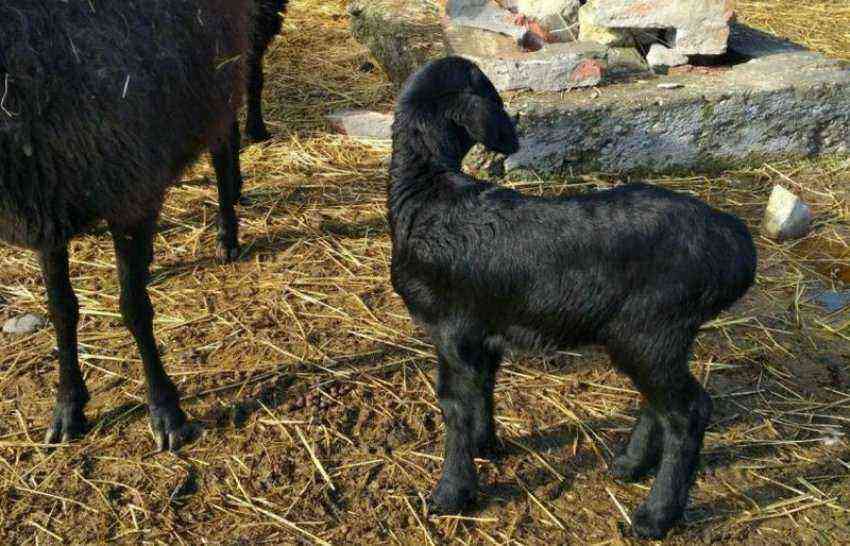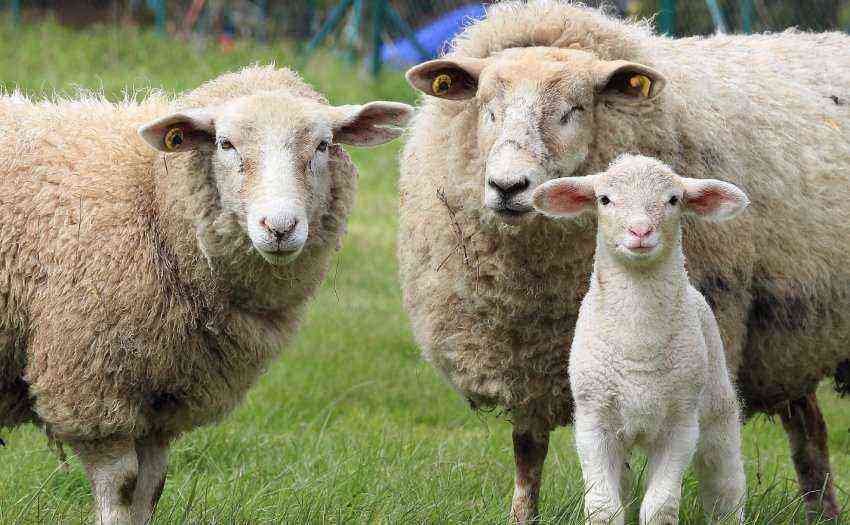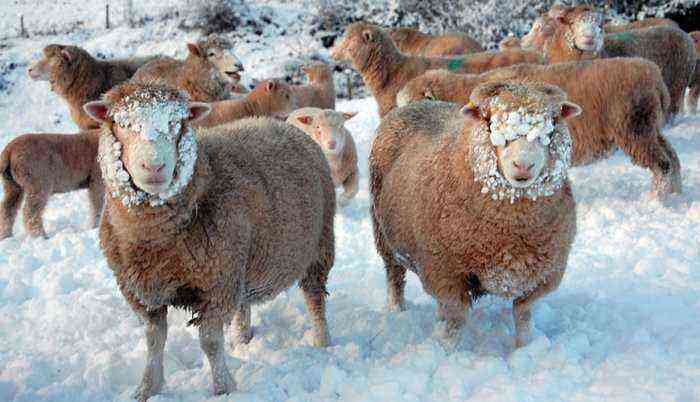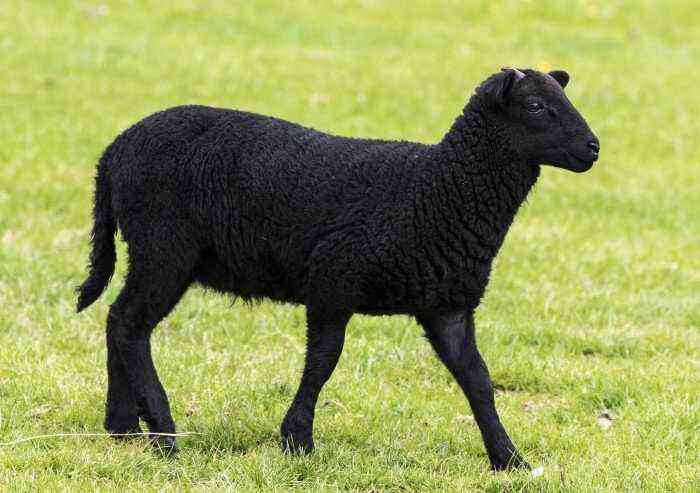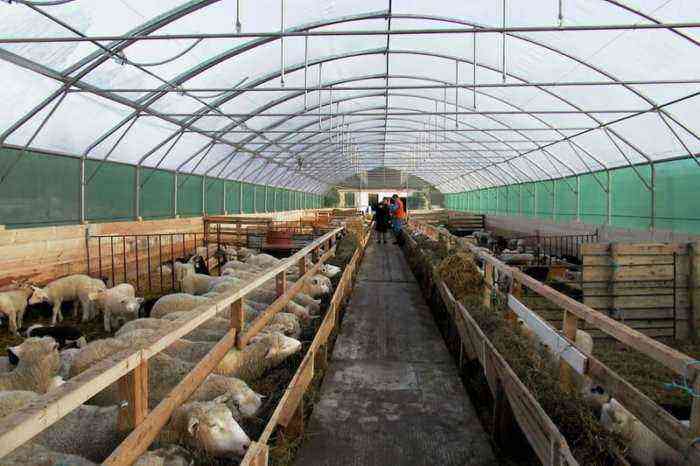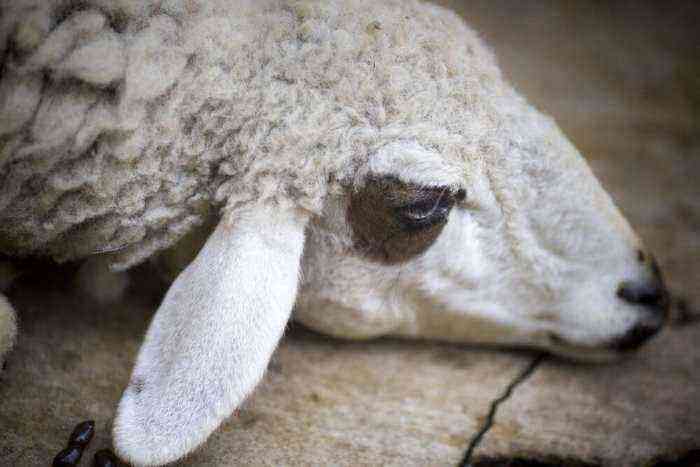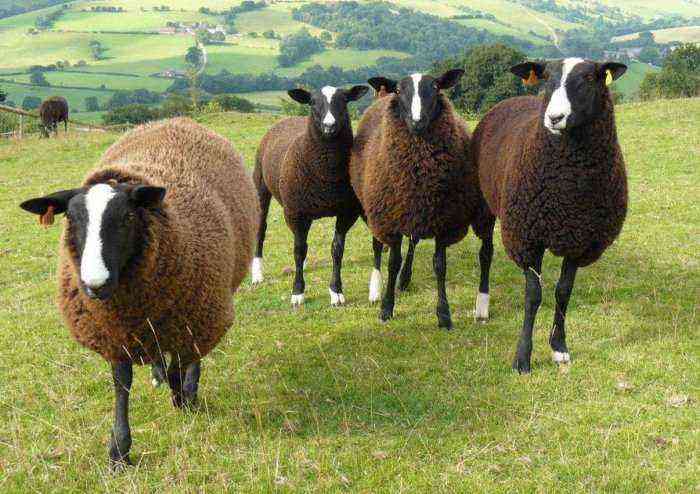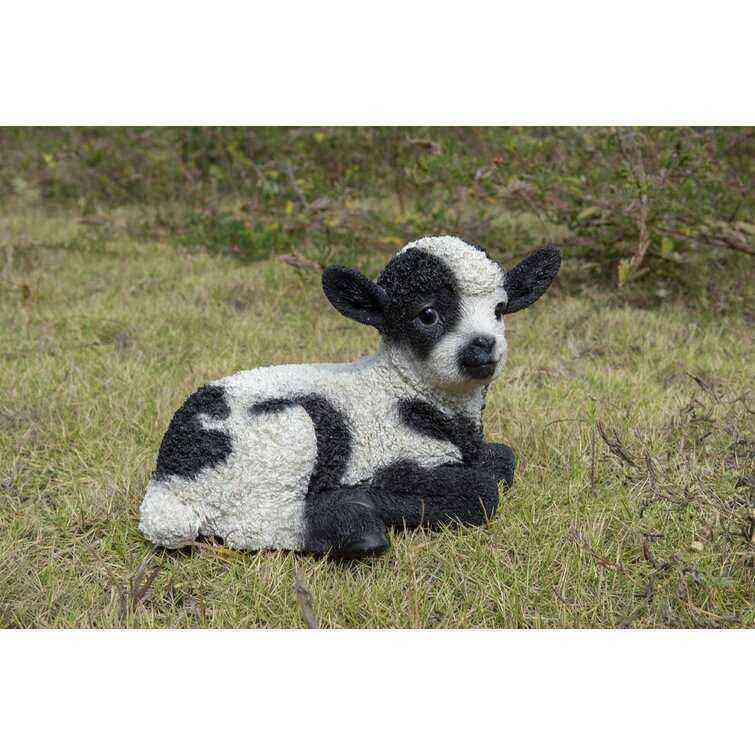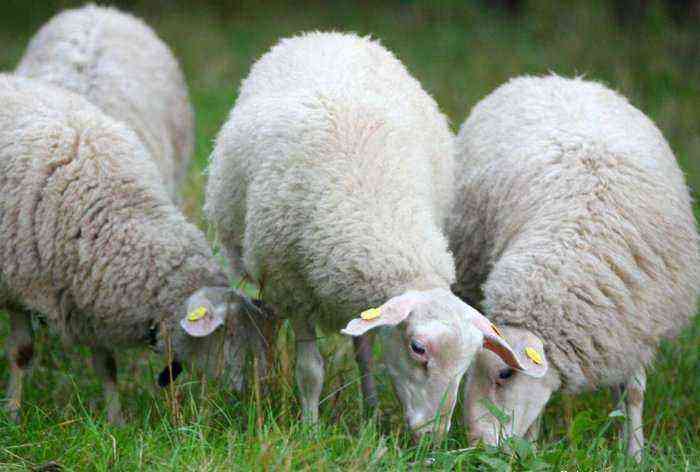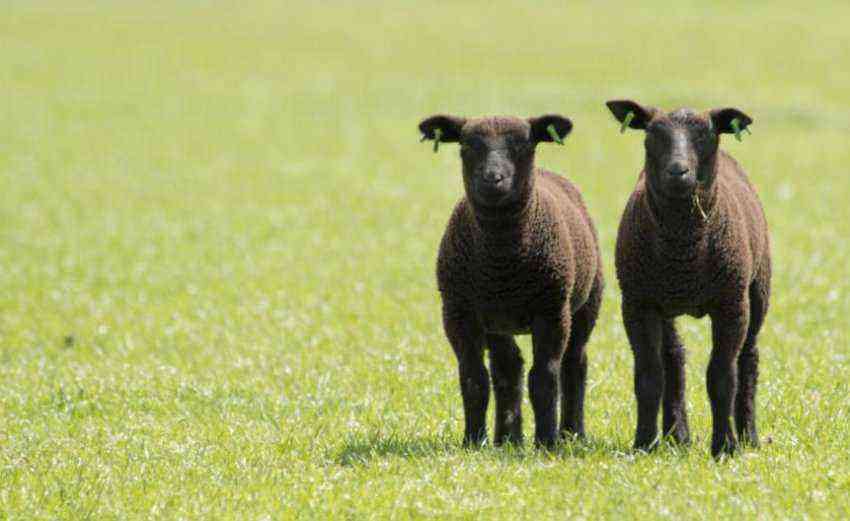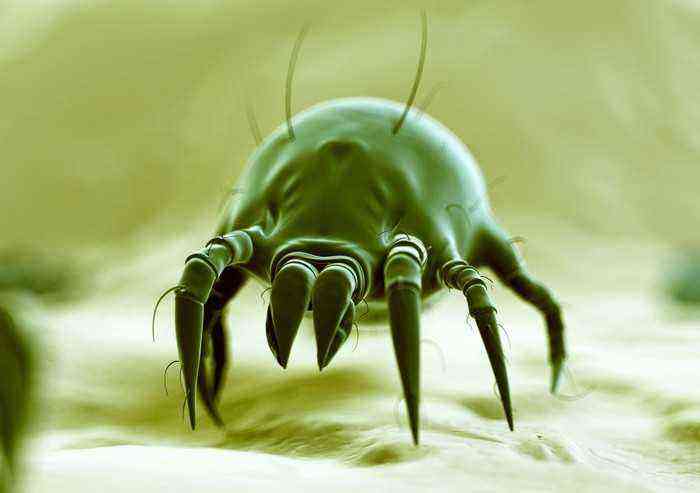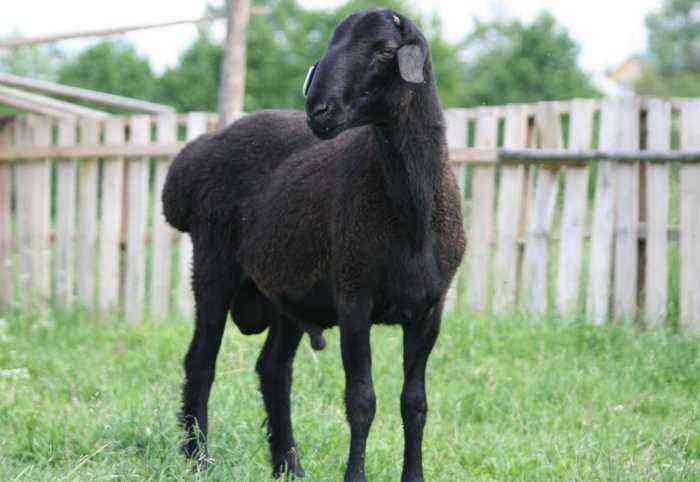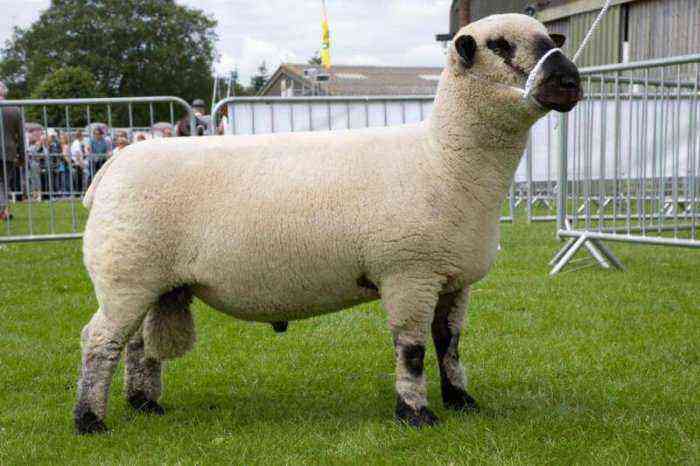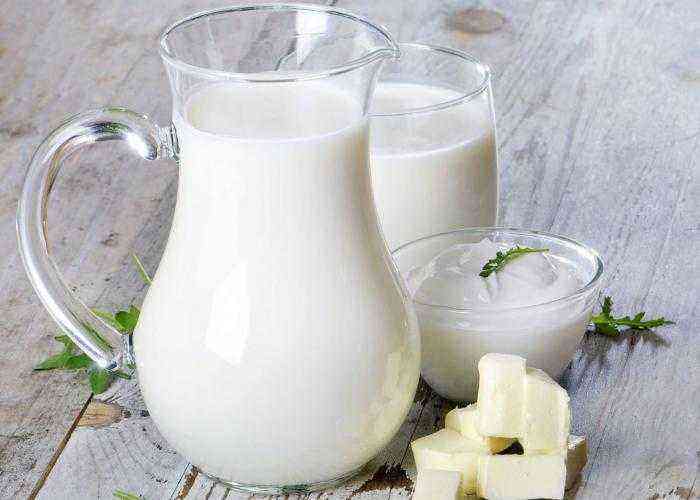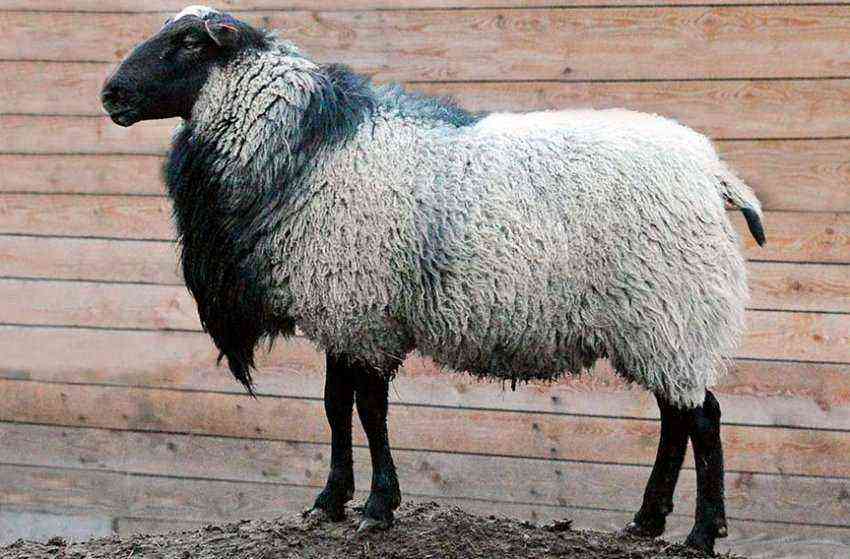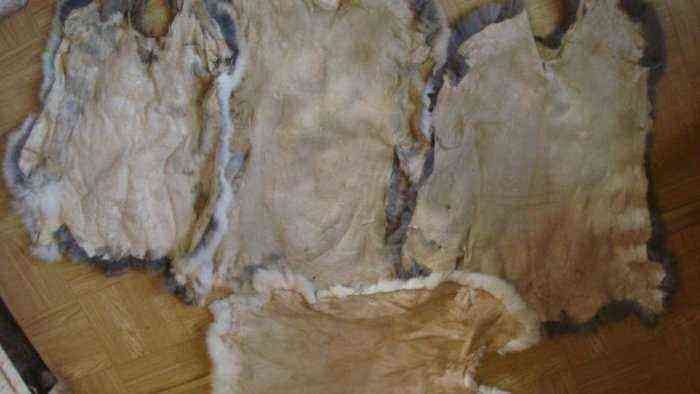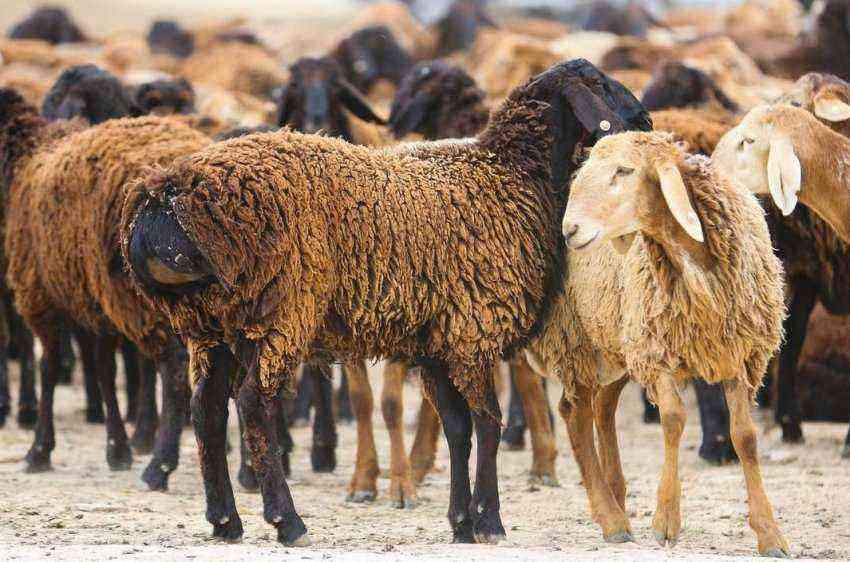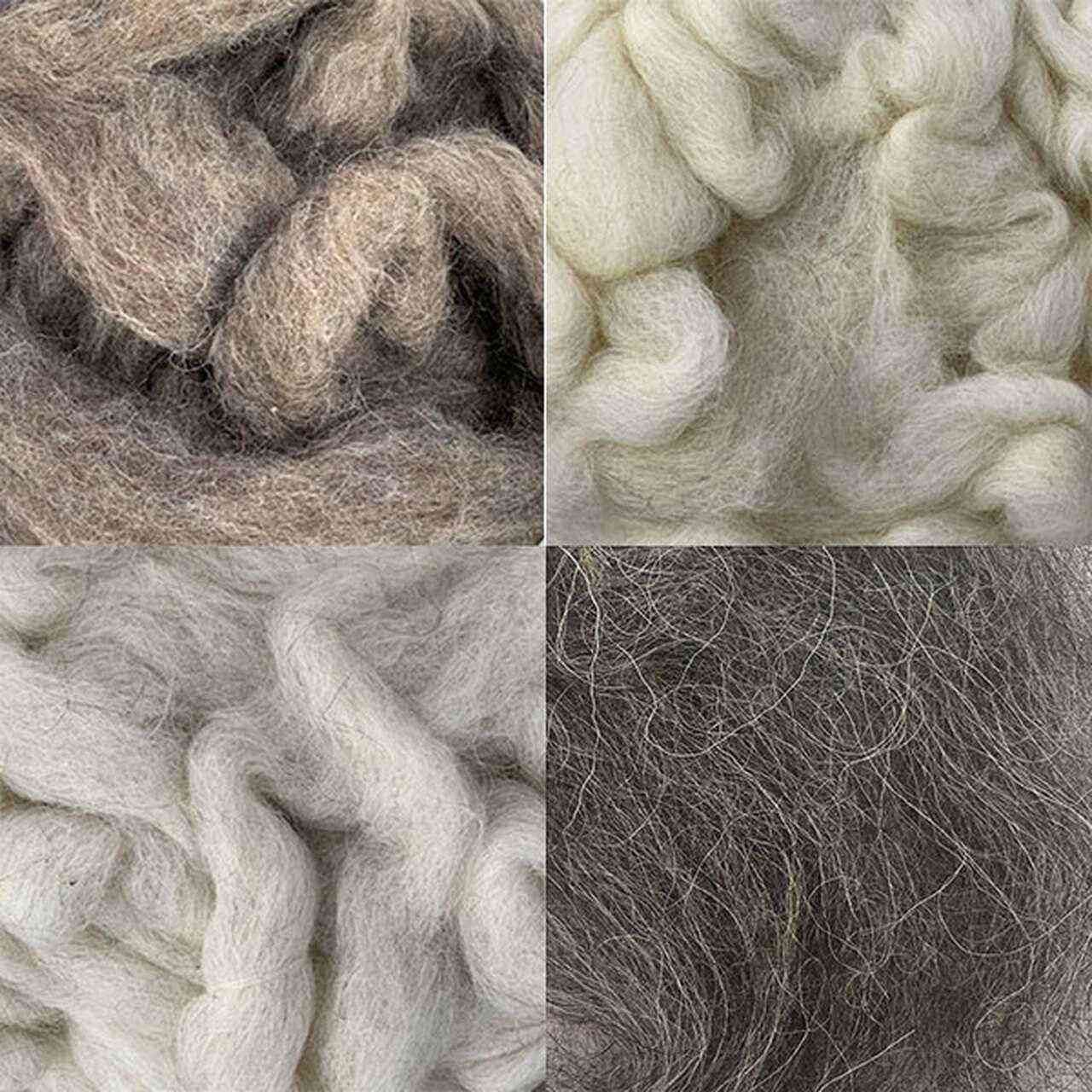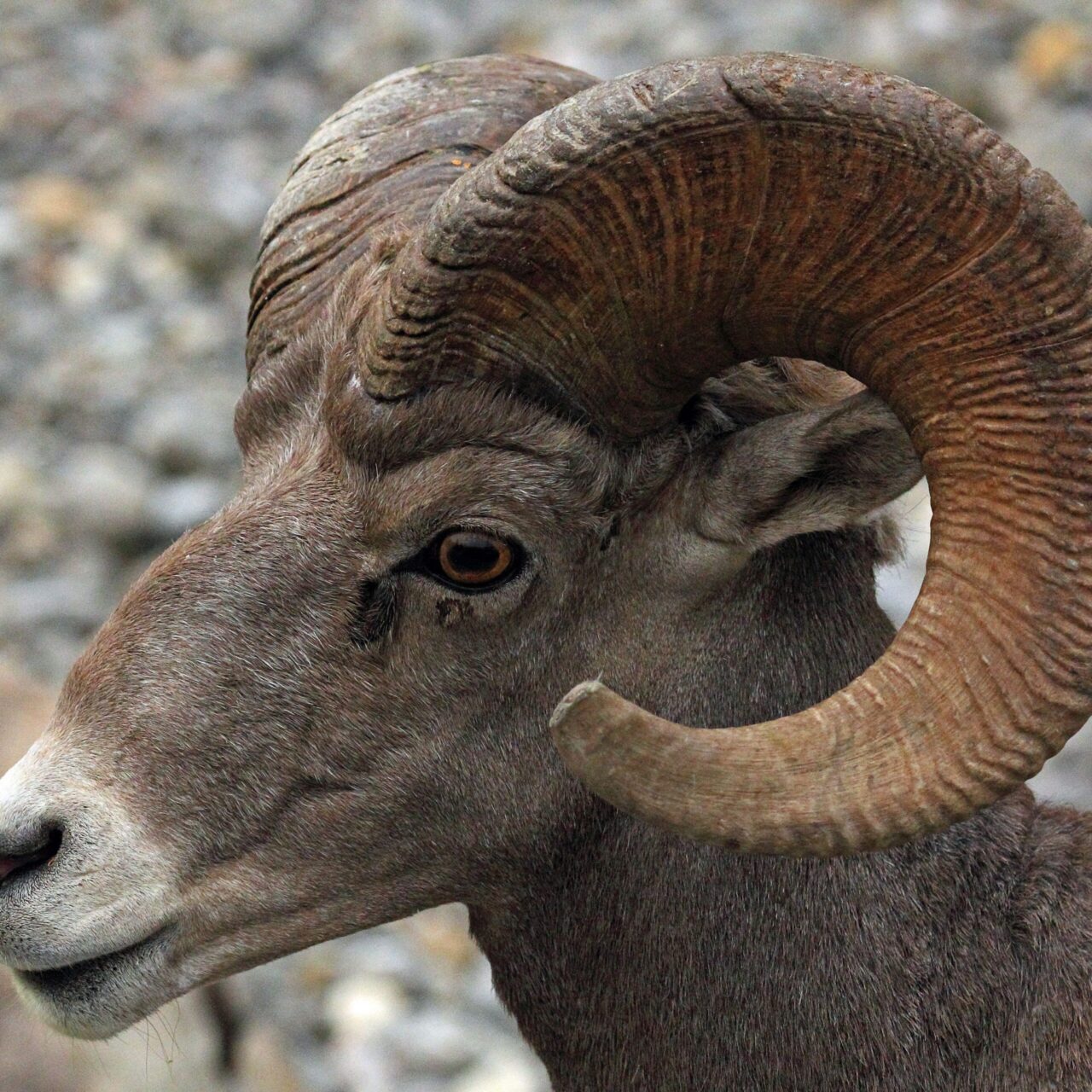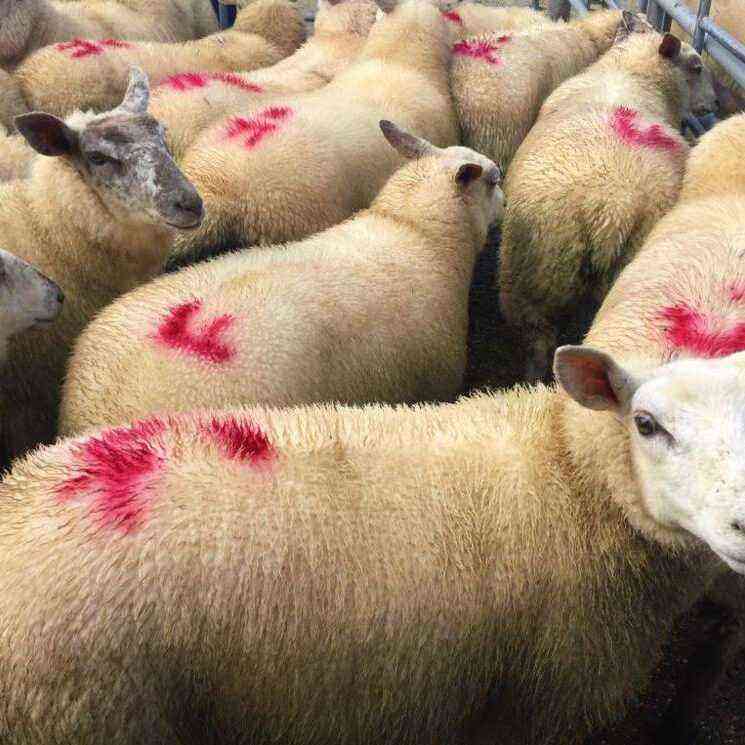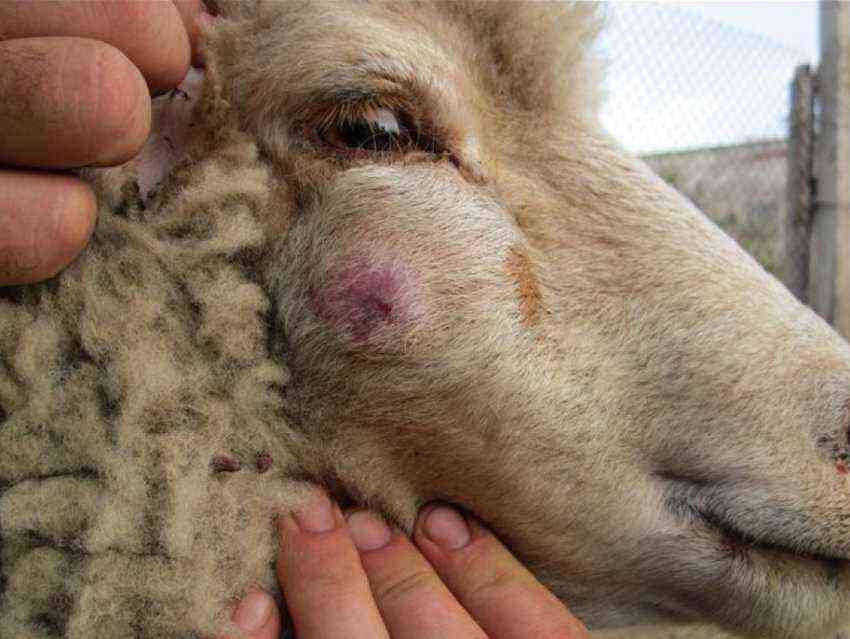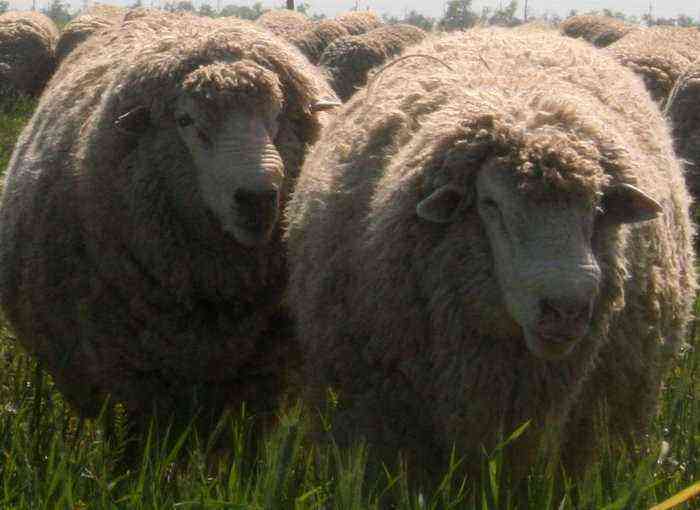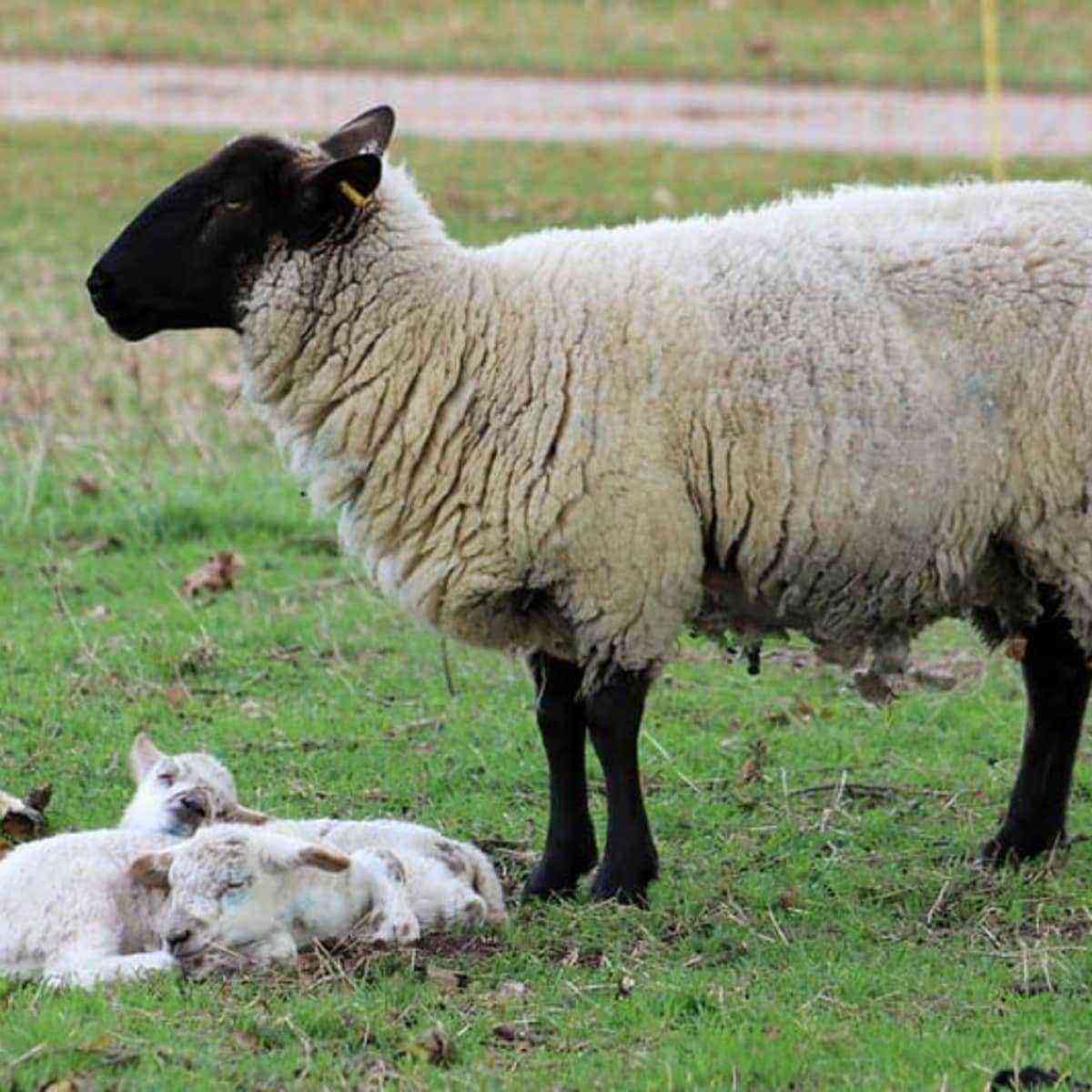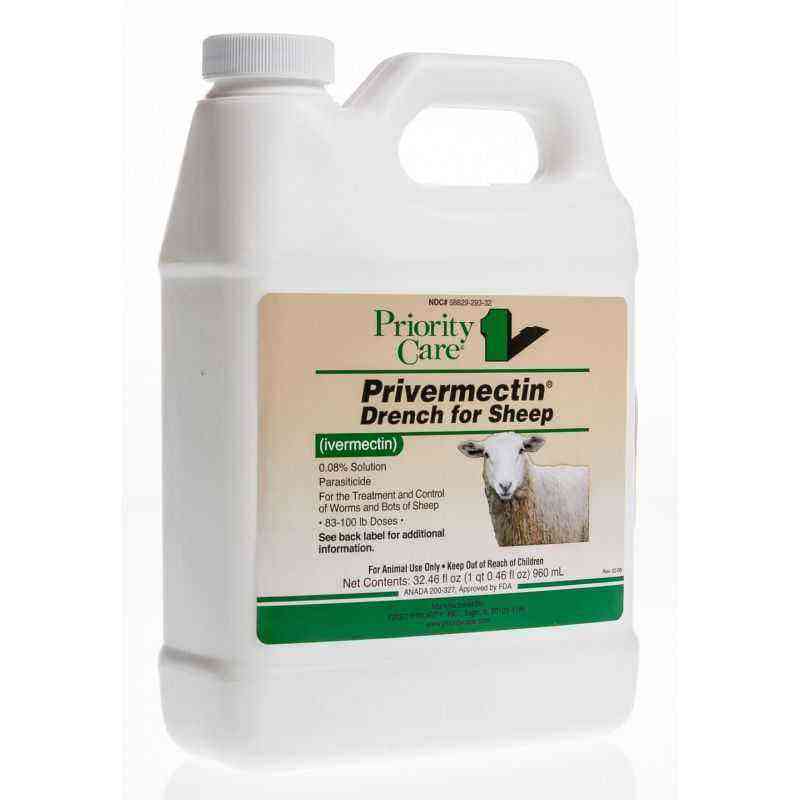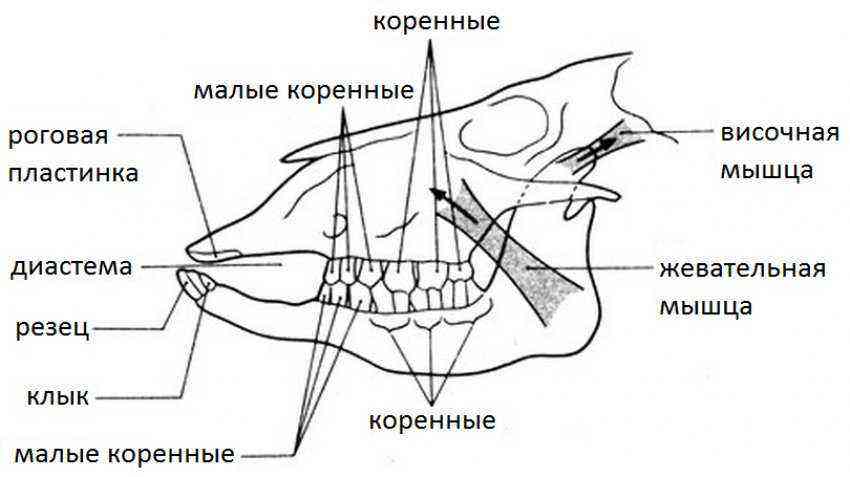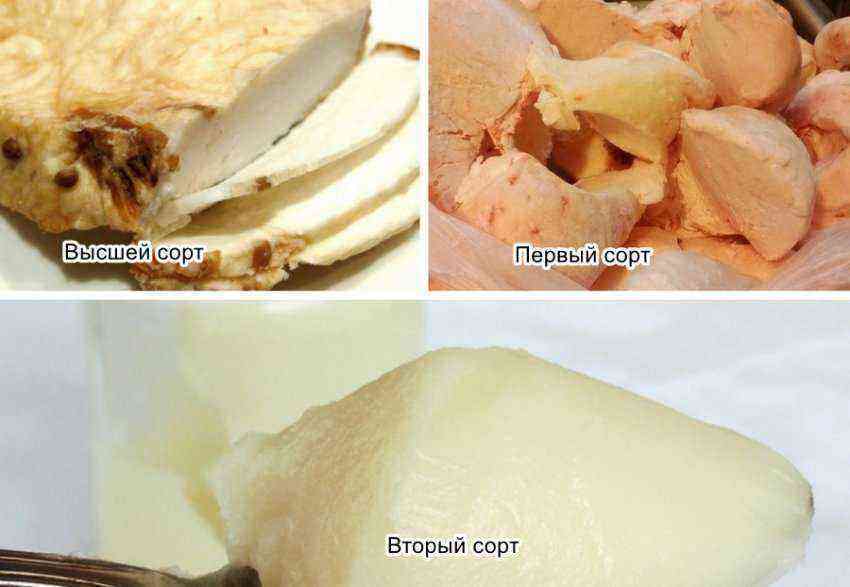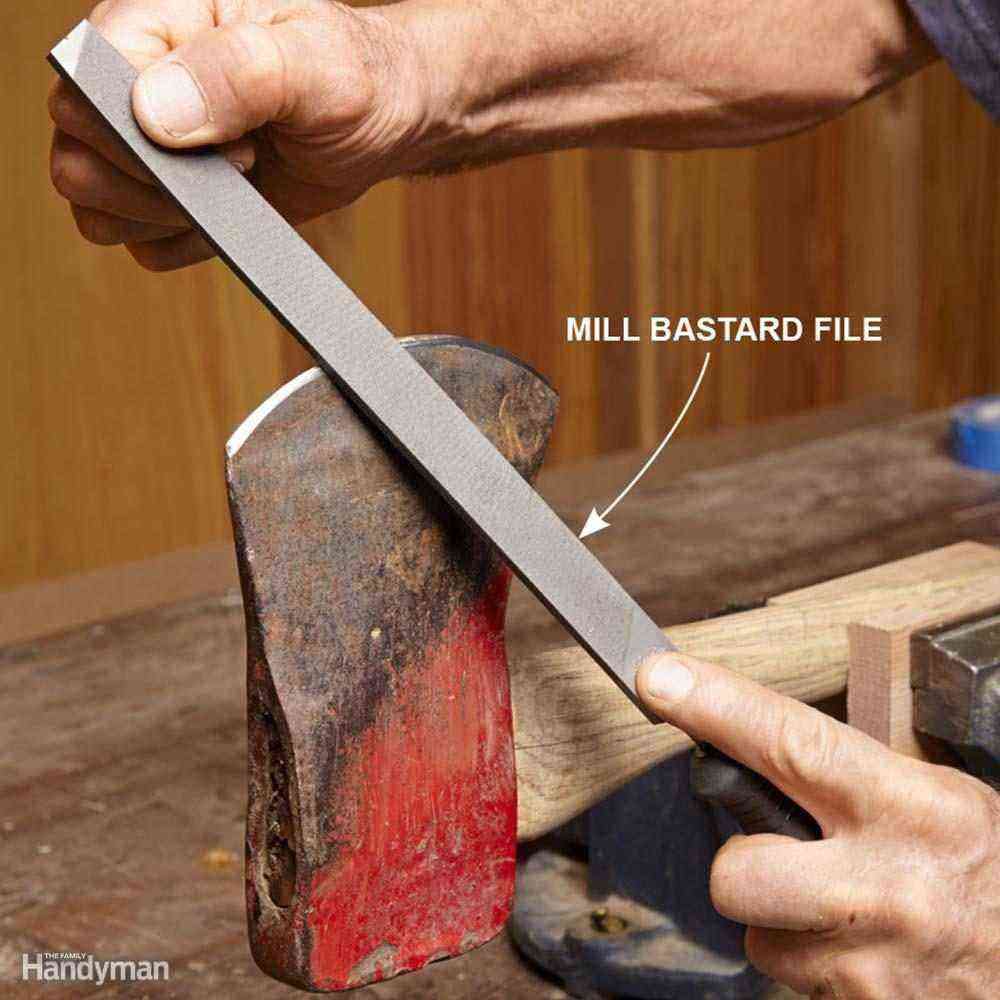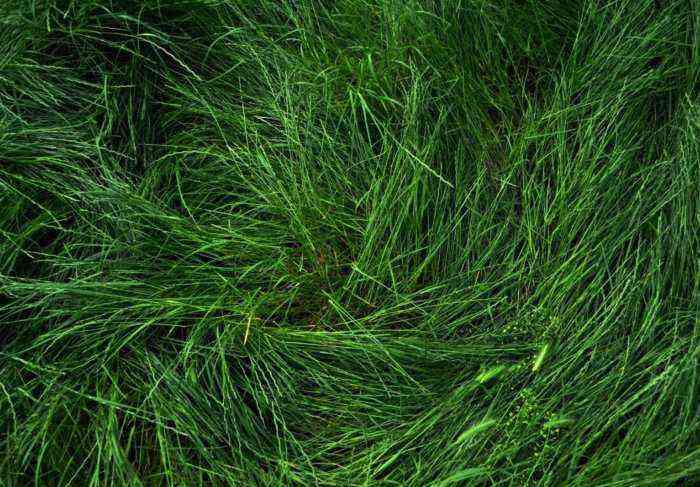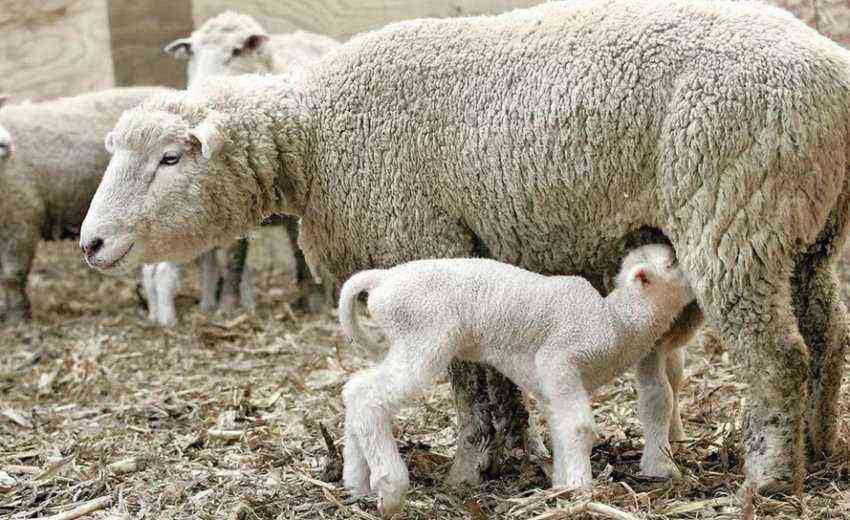The Romanov sheep was bred in Russia. Sheep of the Romanov breed belong to the meat and wool direction and are popular not only in Russia, but also in some European countries. What is remarkable about this breed, what are its characteristics, productivity, we will discuss further.
Romanov sheep
History of the breed
The first mention of the Romanov breed dates back to 1802. The peasants who lived on the territory of the Yaroslavl region of Russia were engaged in sheep breeding. They had local short-tailed breeds at their disposal. Sheep breeders constantly selected for reproduction the best individuals with good quality indicators of wool.
Gradually, the descendants of short-tailed sheep began to give birth to lambs that fully satisfied the needs of local sheep breeders – they were prolific, had thick wool and provided farmers with meat and milk. So the sheep of the Romanov breed appeared. The first representatives of its representatives were distributed on the territory of the Romanovo-Borisoglebsky district of the Yaroslavl province, so they were called Romanov.
Appearance
Consider the external characteristics of the Romanov breed of sheep:
- height at the withers reaches 65-70 cm;
- barrel-shaped body;
- back and sacrum straight;
- the head is compact, the muzzle is elongated;
- the nose has a characteristic hump;
- auricles are located vertically;
- the chest is deep and wide;
- the tail is thin and short, up to 13 cm;
- the limbs are muscular, even;
- sheep may be horned or polled;
- the average weight of a ram is 60-70 kg, ewes – 45-55 kg;
- the hair on the muzzle, limbs and ears is black (white spots are allowed on the legs);
- the outer hair of the Romanov sheep is black, and the downy hair is white, due to which the coat looks blue;
- the down is longer than the guard hairs.
Attention! Romanov lambs are born with black wool. It brightens up over time. At the age of 3,5-5 months, the color of the coat changes completely.
External characteristics of the Romanov breed of sheep
Sheep of this breed are classified according to the type of skeleton. Distinguish normal, rough and tender bones. For industrial breeding, the first type is best suited. Sheep with normal bones have the highest rates of shearing and wool quality and meat productivity. In sheep with a rough type, the coat is coarser, and the slaughter yield of meat is reduced, since the bones and skin of animals are heavy. But they are more hardy and viable. The third type is not used for breeding for a tribe, they have a minimal wool shear, and the fleece is not of the best quality, it falls off. Sheep and rams of this type do not differ in good health.
Productivity
Romanov sheep belong to the meat and wool direction of productivity. Their fleece is highly valued and used for fur coats. Sheep are sheared 2-3 times a year. It is possible to get up to 3,5 kg of high-quality wool from each ram, and up to 2 kg from a ewe.
The wool of the representatives of this breed is thick – up to 2800 fibers are located on one square centimeter of skin. They contain a substance with antibacterial properties, lanolin. The thickness of the downy fibers is 25-27 microns, and the outer hair is 60-90 microns. The wool is soft, twisted at the ends. Due to its special structure, it retains heat well.
Representatives of the Romanov breed are precocious. Lambs quickly gain weight. Already at the age of 7 months, the body weight of a lamb is 30 kg. The slaughter yield of meat is 47-50%. The best taste qualities are lamb meat at the age of 7-9 months. It is devoid of a specific smell, has a delicate structure and contains a lot of juice.
Considering the productivity indicators of Romanov sheep, one cannot fail to mention their fecundity. Ewes are able to bring up to 3 offspring in 2 years, as they are polyester. Almost 50% of females carry triplets, 38% of sheep bring 2 lambs per lamb. 5-8% of Romanov ewes give birth to 1-8 cubs at a time.
Attention! The number of Romanov sheep per year increases by 220-300% due to the fertility of females.
Ewes can produce up to 3 offspring in 2 years
Advantages
Romanov sheep are valued for their hardiness, fertility and excellent fleece characteristics. They are often used to improve the performance of other breeds. The main advantages of the breed:
- Ability to adapt to different climates. These animals can be bred both in cold regions and in areas where it is hot.
- Endurance. Sheep easily tolerate severe frosts (up to 30 degrees), thanks to their thick wool coat.
- Polyetry of females. The percentage of successful mating in these sheep reaches 75-80%. They are able to bear offspring 3 times in 2 years.
- Fertility. In one lamb, ewes bring 2-9 lambs, due to which the number of livestock is rapidly increasing.
- Excellent quality wool.
- The skin is light, good to wear.
There are not so many shortcomings in the breed, but they still exist. For example, these animals are afraid of drafts and dampness, as well as sudden temperature changes. Being in such conditions, they suffer from diseases of the respiratory system.
Content
Romanov sheep are undemanding to the conditions of detention. In the spring-autumn period, it is useful for them to spend a lot of time on the pasture. They can easily find food there. They feed on grass, moss, leaves, cereals and legumes.
Attention! Stall keeping is not suitable for these animals. Low mobility and lack of fresh air adversely affect the metabolism of animals and fertility.
In winter, when sheep are transferred to sheepfolds, a walking area must be equipped nearby. Feeders are installed on it, because in the fresh air animals eat with appetite. In hot weather, the flock is driven under a canopy, and in the late afternoon they are again sent to graze.
Romanov sheep grazing
There are no special requirements for the arrangement of the barn. Romanov sheep are not afraid of the cold. If inside the temperature does not fall below +5 degrees, the animals will be comfortable. The main thing is that the straw bedding always remains dry and clean. The farmer must take care of ventilation in the sheepfold. The accumulation of harmful vapors of ammonia and hydrogen sulfide adversely affects the health of livestock.
Attention! To protect sheep from infectious diseases, you need to adhere to the vaccination schedule and timely disinfect drinkers and feeders. Twice a year, sheep are treated for helminths and skin parasites.
Diet
In summer, green fodder predominates in the diet of sheep. They feed on pasture vegetation. During this period, animals do not need supplementary feeding, but towards the end of summer, when the amount of nutrients in the grasses decreases, other foods are also introduced into the diet:
- Cereals and legumes – green rye, corn, shoots of winter wheat.
- Silage. Sheep especially love ensiled corn with bean hay.
- Roots. Romanovsky sheep are introduced to the daily menu fodder beets and carrots, as well as a small amount of zucchini and pumpkin pulp.
- During the stall period, each sheep is given at least 4 kilograms of hay.
- Concentrates – cereals and legumes, cake, bran.
- mineral supplements. Animals should receive salt daily. Many farmers put mineral licks in the feeder.
Attention! During grazing, the sheep breeder must carefully choose places for grazing the flock. The advantage is given to dry pastures, and flooded wet meadows are not suitable for Romanov sheep.
Animals drink a lot, especially in hot weather. The flock is led to the watering place in the morning and in the evening. You can not give sheep water from a stagnant reservoir – this is a breeding ground for infections. It is necessary to ensure that the drinkers in the sheepfolds are always filled – each adult consumes 6-8 liters per day.
Breeding
Breeding Romanov sheep is a profitable business, because these animals are prolific. They are characterized by early puberty – at 3-4 months, but it is impossible to allow mating at this age. It is recommended to wait up to a year. Sheep selected for reproduction are prepared for mating in advance. They are given the best pastures and feed is introduced into the diet.
Pedigree ram of the Romanov breed
The mating of sheep is usually planned for the end of summer or autumn, it depends on the climate of a particular area. Pregnancy in representatives of this breed lasts 145 days. After lambing, they are able to feed numerous offspring, as they are distinguished by high milkiness and fat content of milk.
Attention! For one lactation, the ewe gives from 110 to 150 liters of milk, the fat content of which reaches 8%.
In Romanov ewes, sexual hunting begins even in the lactation period, and its duration reaches 5 days. They bring up to three lambings in 2 years, and in each litter there are most often several cubs.
Lambing in sheep of the Romanov breed
Breeding sheep of the Romanov breed is associated with the need to often give birth to queens. The farmer must have an idea of how lambing occurs. It usually occurs at the end of winter or the beginning of spring, depending on when the mating was made. With his approach, the sheep behaves restlessly, bleating. Other signs of approaching lambing:
- swelling of the udder (2-3 days before delivery);
- the release of droplets of colostrum from the nipples with pressure;
- sagging belly;
- enlargement of the external genitalia.
Attention! 3-4 days before the expected date of lambing, the ewe should be transferred to a separate stall, put a clean and dry bedding there, prepare a feeder and drinker.
Lambing in Romanov sheep is easy. Lambs spawn every 15 minutes. Usually human intervention is not required, but in rare cases, when the lamb is in the wrong position in the birth canal, assistance may be needed. When the cub comes out, the sheep independently gnaws through the umbilical cord, after which it licks the baby.
Important! During the first hour of life, each lamb should receive a portion of maternal colostrum.
A novice farmer needs to enlist the support of a veterinarian by inviting him to give birth to a sheep. In case of complications, he will show you how to proceed. In the future, the sheep breeder will cope on his own. After lambing, the placenta should come out of the birth canal. Normally, this happens after 4-6 hours. If this does not happen, you will need veterinary help. The afterbirth is carried away from the farm and buried in the ground. The ewe is provided with drinking water, and you can feed her 6-9 hours after birth. Newborn lambs are kept in a separate compartment, they are brought to feed every 2-3 hours.
Those who are just facing a choice of which sheep to breed should pay attention to the Romanov breed. It has excellent productivity characteristics, and is unpretentious in care and maintenance. The main thing for representatives of this breed is to move more and eat well so that productive indicators remain at the proper level.
